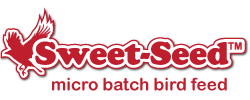How Early Should Hummingbird Feeders Be Put Out in Spring?

Many backyard birders are eager to attract hummingbirds as early as possible in spring, but just when is the right time to put out hummingbird feeders so they are ready for the first arrivals of these flying jewels? There is no single exact date that is ideal for every backyard or every hummingbird, but general guidelines can help you determine just when your nectar feeders should be cleaned, filled and ready to go.
Your Best Time to Put Out Spring Hummingbird Feeders
When spring is imminent, you may be eager to put out those nectar feeders. Before you mix up a new batch of nectar, consider…
March Is the Month For most backyard birders, March is the best time to put out hummingbird feeders. The first of March is a good time to put out nectar feeders in southern areas where hummingbirds arrive earlier, and the end of the month is a good guideline for feeding hummingbirds further north. In the extreme ends of hummingbird ranges, however, the dates can differ. In the very furthest southern edge of these birds' range, such as southern Florida or right along the Gulf Coast, hummingbird feeders may be able to be put out as soon as mid-February. In the northern extremes such as Maine, southern Canada or into Alaska, however, hummingbird feeders may not need to be put out until mid-April or even the beginning of May.
The More the Merrier – And the Earlier Hummingbirds remember their favorite feeding sites from year to year, and the longer you have been feeding hummingbirds, the more of them that will return to enjoy your generosity. This means that each spring you may need to have even more nectar feeders ready and available for hummingbirds, or else they may move on to areas with more abundant food sources. Putting up just one or two hummingbird feeders very early in the season is suitable, but as soon as the birds are sighted additional feeders should be hung to accommodate even more voracious appetites.
Consider Spring But Don't Count on It Many backyard birders assume that the first day of spring is the best time to hang hummingbird feeders, and while the middle of March can be good timing to get started feeding hummingbirds, don't depend on one exact date to hang your feeders. A mild winter and a warmer spring when flowers bloom sooner can encourage hummingbirds to migrate a few days earlier than expected, while a hard winter with many late season storms can delay migration somewhat. Weather conditions won't affect hummingbird migration for more than a few days, however – instead, it is the light levels and amount of daylight that triggers these birds' migration instincts.
Keep Your Own Calendar One of the most effective ways to know how early to put out hummingbird feeders in spring is to keep your own, personal calendar of migration dates for these popular birds. Each year, note the date when you first see a hummingbird appear at your feeders or flowerbeds. Compare those dates from year to year, and you'll see that hummingbirds have very accurate calendars themselves! You can also note other significant dates on your hummingbird calendar, such as when male and female birds appear (males typically migrate earlier), when nesting begins or when hummingbirds begin to leave on their return journeys each fall.
The Early Birder Gets the Hummingbirds
No matter how many hummingbirds you expect to arrive or how many nectar feeders you want to put out each spring, it is better to be a few days early than a few days late. If you put out hummingbird feeders too early and the birds haven't arrived, all that may be lost is a few ounces of uneaten nectar that you need to replace as it slowly spoils. On the other hand, if you put out feeders too late, hummingbirds may believe your feeders to be unreliable food sources and they will move on to find better options, bypassing your feeders entirely. Early feeding, then, may surprise you as more hummingbirds arrive perhaps even sooner than you expected, while late feeding is sure to be a disappointment as the birds find someplace better to eat and fewer birds visit your feeders.
So what are you waiting for? Spring is here, it's time to get those hummingbird feeders out!
